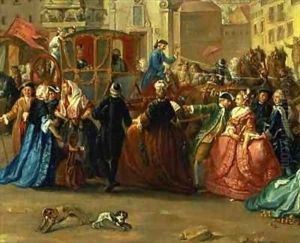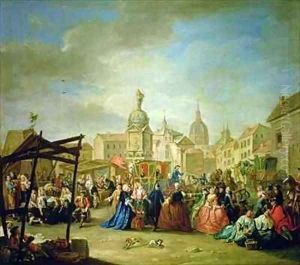Manuel de la Cruz y Cano Paintings
Manuel de la Cruz y Cano was a Spanish artist born in 1749, whose work and influence are most notably recognized within the context of the Rococo period. Though not as widely known as some of his contemporaries, de la Cruz y Cano made significant contributions to the artistic traditions of his time, particularly within Spain.
De la Cruz y Cano's early life and training are not extensively documented, but it is known that he was active during the latter half of the 18th century, a period that was characterized by a growing interest in light, ornate and decorative elements in art, which was a departure from the grandeur and solemnity of the Baroque era that preceded it. He was part of the broader European Rococo movement, which was known for its elaborate ornamentation, intricate detailing, and pastel color palette.
Throughout his career, Manuel de la Cruz y Cano created artwork that reflected the aesthetic sensibilities of the Rococo. He is known to have produced paintings, though specifics about his works, including subject matter and surviving pieces, are not well-documented in art historical records. His style would have likely included the use of playful themes, a soft color scheme, and a lightness of touch that were all characteristic of the Rococo movement.
Unfortunately, de la Cruz y Cano's work did not achieve the same level of fame as that of some of his contemporaries, such as François Boucher or Jean-Honoré Fragonard, and as a result, his influence on subsequent generations of artists was limited. Despite this, his contributions remain a part of the rich tapestry of 18th-century Spanish art.
Manuel de la Cruz y Cano died in 1799. While specific details of his death are not widely known, his passing marked the end of an artist's life that coincided with a transformative period in European art. The Rococo style eventually gave way to Neoclassicism, which sought to revive the classical ideals of simplicity and purity in art. De la Cruz y Cano's legacy, like that of many artists of his time, provides insight into the cultural and artistic shifts that were taking place as Europe moved towards the modern era.

